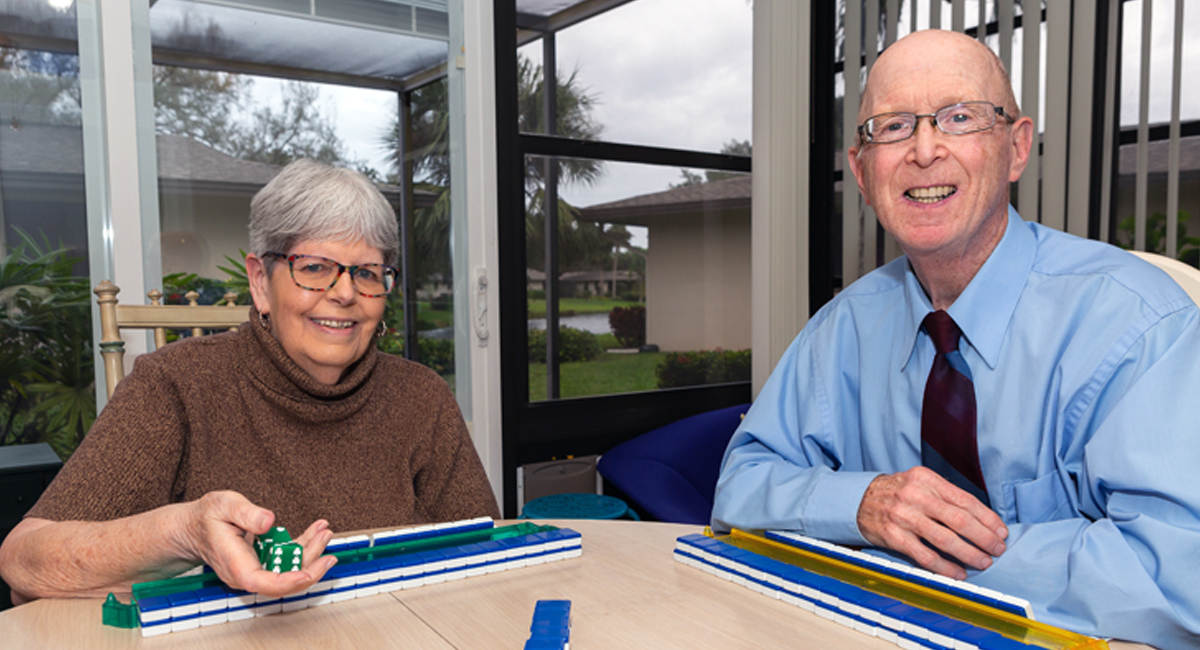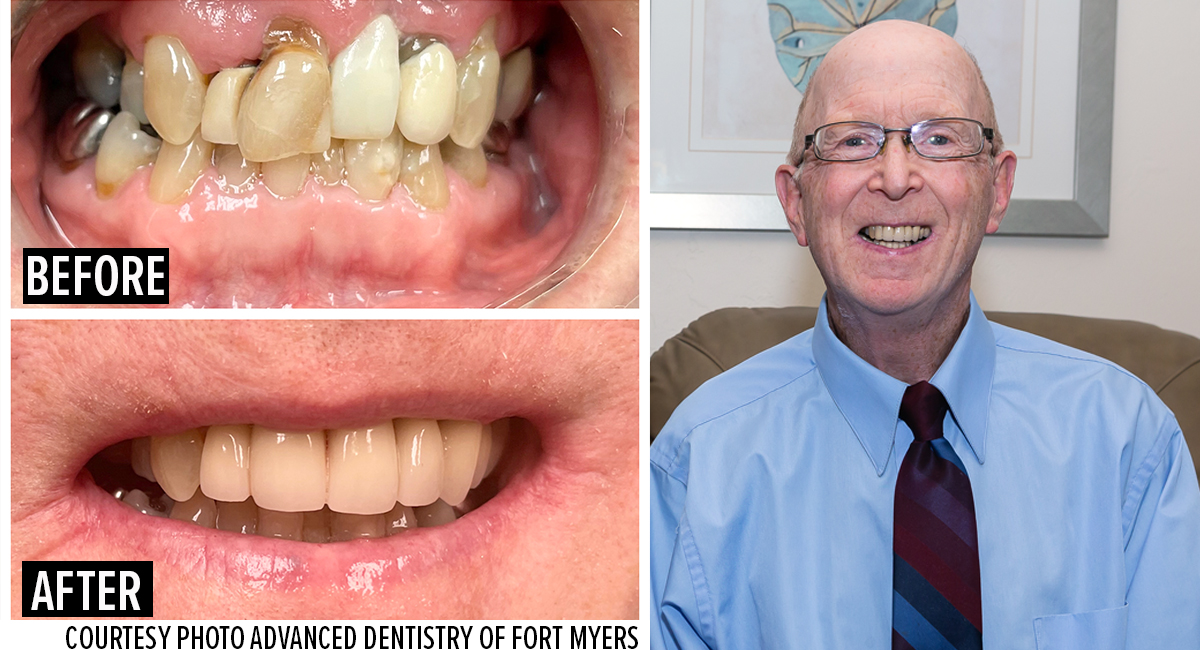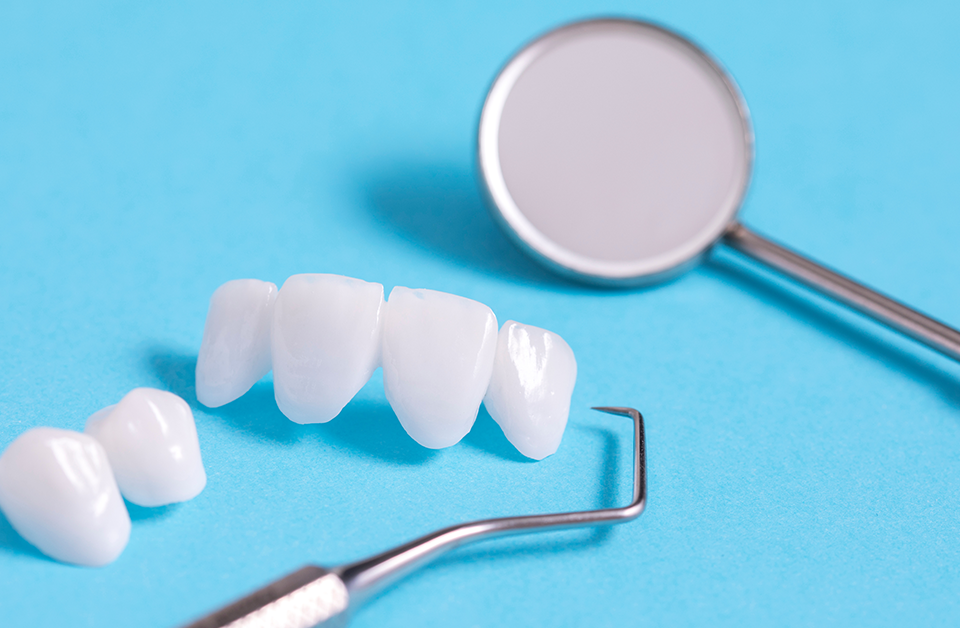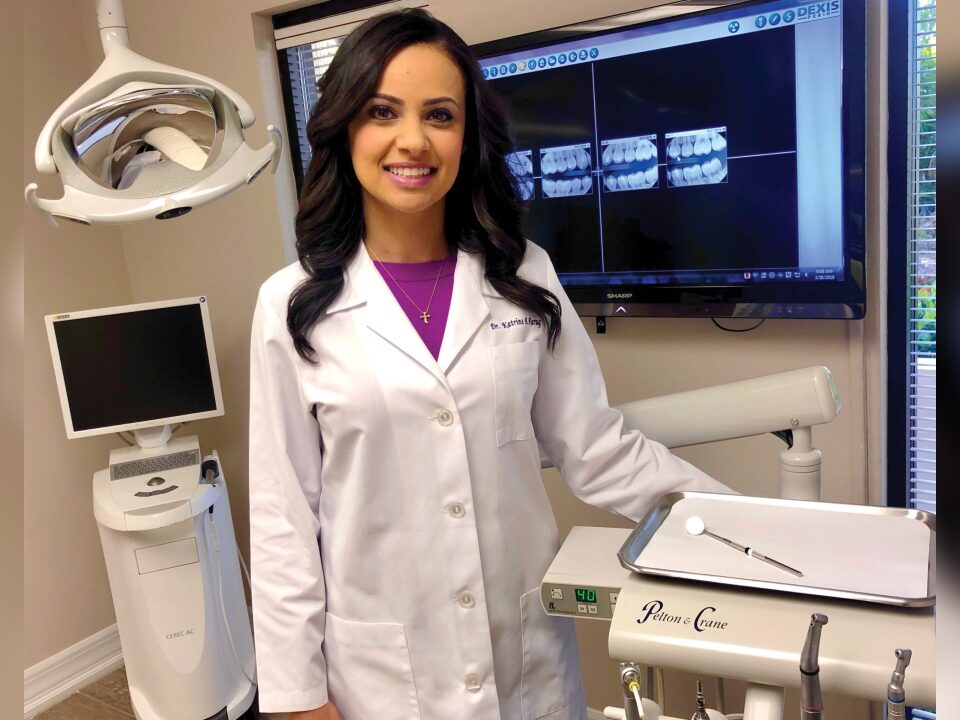

JORDAN PYSZ / iFoundMyDoctor.com Soon after they started sharing their lives together, Bill and Colette learned they were suffering from an aggressive form of tooth decay that they were treated for at Advanced Dentistry of Fort Myers
The love story of how Bill Clausen and Colette Ott finally came to share their lives together reads like the plot to a Hallmark Channel movie.
It starts more than 50 years ago, with 18-year-old Bill taking a summer job at the South Haven, Michigan, resort that was owned and operated by Colette’s family.
A connection between Bill and Colette formed that summer, and it only grew stronger over the years. But because Bill preferred to live up north and Colette preferred to live down south, they lived apart for more than 40 years.
“Bill always said that if I would have moved to South Dakota, we’d have gotten together sooner,” Colette says. “But I always say that if he would have just moved to Florida, we would have been together sooner. I guess we were both a little stubborn.”
Perhaps, but four years ago, after snowbirding at Colette’s place in Fort Myers for a few winters, Bill finally gave in and made the permanent move to Florida that brought the couple together for good. Their only regret is that Bill didn’t make that move sooner.
“I was afraid I wouldn’t be able to take the summers here, that they’d be too hot and humid, but I finally decided that I had to at least give it a try,” says Bill, 69. “I’m glad I did because I’m really enjoying it here.
“We live in a beautiful development, and I work as a volunteer with the landscape committee, so I’ve got that to keep me busy during the day. I also walk a lot of our neighbors’ dogs, which is something else I enjoy doing.”
Colette, 71, stays busy doing charity work and proofreading depositions for a court reporter. When they’re together, she and Bill play a lot of cards with neighbors, one of whom, they discovered, worked alongside them at the Michigan resort.
That isn’t the only discovery the couple have made since they’ve been together. They also discovered not long ago that despite making regular visits to their respective dentists, both suffer from an aggressive form of tooth decay.
“I was born with bad teeth to begin with and had a lot of problems with my teeth when I was in junior high and high school,” Bill says. “But the news of this decay was disappointing to hear because I was seeing a dentist regularly in South Dakota, and he never mentioned it.
“Because of my history, I’ve always tried to take good care of my teeth, but I didn’t learn about this problem until I went to Colette’s dentist here in Fort Myers. She took pictures of my teeth, and when I looked at them, I could see right away that I had a problem that needed to be addressed.”
Surprise, Surprise
Colette’s dentist is Katrine A. Farag, DMD, of Advanced Dentistry of Fort Myers, and the pictures were no ordinary Polaroids. They were taken with an intraoral camera that is designed to reveal serious dental issues.
“With each new patient, I start with a standard visual exam and take x-rays of their teeth,” Dr. Farag explains. “But we also take photos with the intraoral camera because those photos make it easier for the patient to see and understand what I discover.
“The photos that this intraoral camera produces show up on a screen, and it’s like looking at a tooth under incredible magnification. It allows you to see each tooth in great detail, and it really helps a patient see what I see.
“If I show a patient an x-ray and say, Here’s the problem; they may not fully grasp the issue. But with the images we get from the intraoral camera, it’s very clear. You can see everything plain as day, and it really helps patients understand the issues that need to be resolved.”
Dr. Farag says some patients, particularly those who are adamant about taking good care of their teeth, are shocked to learn what the intraoral camera reveals. Bill was one such patient.
“Here is someone who has not neglected his teeth, who had been going to the dentist regularly, and here I am saying, You need this extensive treatment plan,” she says. “Patients can be a little sensitive to that, but the images help them understand the reason for the treatment.”
Bill can attest to that. Though he was surprised to hear of the extensive decay, he saw it for himself on the images and immediately understood Dr. Farag’s concern and why she was recommending a makeover of the teeth in his smile line.
That makeover began with Dr. Farag addressing Bill’s upper and lower front teeth, all of which were treated for existing decay, reshaped and capped with crowns. During subsequent visits, Dr. Farag treated a few other teeth in the same manner.
The only hitch came when Dr. Farag tried to save a tooth. Although Dr. Farag deemed the tooth unsalvageable, she did not want to give up on it.
Satisfying Outcome
When that tooth ultimately failed, Bill was sent to a partnering practice, where the tooth was extracted and replaced with a dental implant, a root-shaped, screw-like body that is placed in the jawbone to serve as the foundation for replacement teeth.
As it was with Bill, the replacement teeth can be a crown that is cemented or screwed onto an abutment, but two or more dental implants can support a partial bridge or a full denture.
The process in which new bone grows around a dental implant and forms the solid foundation for the replacement teeth can take several months, so it was almost a year before Bill’s treatment plan was completed. The result was worth the wait, Bill says.
“I am very, satisfied with the outcome,” Bill enthuses. “If you look at a picture of my teeth before I went to see Dr. Farag and an after picture, you’ll see that it’s like night and day. And I’m happy to report that I’ve had no problems with my bite or anything.
-Bill
“I feel more confident now because of Dr. Farag’s work. On a scale of zero to 10, with 10 being the best, I’d give the outcome a 10-plus rating. When all this started, I was afraid I was going to have to get dentures, but this is a lot better. I have Dr. Farag to thank for that.”
Bill gladly gives the same 10-plus rating to Dr. Farag and her staff.
“I was extremely impressed with how detail-oriented Dr. Farag is,” he adds. “She works hard to make sure everything is just right. And her staff is great. The hygienists and everyone else are all very personable, and because of them, I’ve never had a bad experience there.”


JORDAN PYSZ / iFoundMyDoctor.com
Bill’s teeth before and Bill’s teeth after receiving treatment from Dr. Farag at Advanced Dentistry of Fort Myers.
Patient Number 22
Colette has been seeing Dr. Farag for dental care since the dentist took ownership of the practice several years ago, and she can’t remember having a bad experience there either.
“I’m patient number 22, and unfortunately, I’ve had a lot of work done there,” Colette says. “A lot of that work has been done in the past 10 or 12 years, after I received radiation treatment for breast cancer. It seems like everything wrong with my teeth started after that.”
Radiation treatment can cause any number of side effects in patients, including dry mouth disease, a condition that Dr. Farag pegged as a likely cause of many of Colette’s dental issues.
Known clinically as xerostomia, dry mouth can also develop as a side effect of taking certain medications or something as simple as sleeping with your mouth open, and it results in the salivary glands failing to produce the saliva necessary to keep the mouth moist.
“And that’s a problem, because when your mouth is too dry, the pH in the mouth becomes low and acidic,” Dr. Farag says. “And that makes you more prone to tooth decay and cavities.
“The decay and cavities develop because bacteria thrive in a dry environment. There are different types of bacteria, and without the moisture, the bacteria are more likely to attack your teeth.
“That’s why most dentists recommend that you not drink a lot of soda or sugary drinks. It’s because those kinds of drinks lower the saliva pH and make it acidic, and that is the environment in which the bacteria thrive and attack the teeth.”
The bacteria attack on Colette’s teeth is significant. It has led to the loss of seven teeth, all of which were replaced by dental implants topped with crowns fit by Dr. Farag.
“And she’s very particular about that part of the process,” Colette says. “There’s a bit of an art to it, and she’s very particular about it, because I had one implant where the crown wasn’t fitting quite right and Dr. Farag sent me back to have the implant fixed.
“She said that I was always going to have trouble with that tooth if the implant wasn’t right, so she made sure that the dentist who did the implants did it right, and I was very happy she did.
“It took a little more time, but I appreciated that she was so precise and persistent. That’s one of the reasons I’ve always appreciated Dr. Farag and the work she does. She really looks out for her patients.”
In Good Hands
Dr. Farag, of course, continues to look out for Colette as her dry mouth disease is an ongoing issue. That can be frustrating for a patient such as Colette, who works hard to maintain good oral health, but Colette says she’s in good hands.
“As you get older, things just naturally start to happen to you, but I feel very confident that no matter what happens with my teeth, Dr. Farag will do the best she possibly can to make things better,” Colette says. “And that’s because she’s an exceptional dentist.
“She’s also very caring and down to earth. She’s a very calm, nice person. Why, the phone number that she gives you for any problems you might have after hours is not the number to an answering service, it’s her actual cell number. That says a lot about her.”
Those are among the many reasons Colette urged Bill to see Dr. Farag for his dental care. They’re also why Colette and Bill have urged dozens of others to do the same.
“We’ve sent a lot of friends her way,” Colette says. “We’re happy to do it because we both just think the world of Dr. Farag. And not only is she good, but her dental hygienist is very caring and competent.
“I’m in good hands when I see her, too, because she catches a lot of stuff and tells the dentist about it. Everyone in the office is like that. Another thing I want to mention is how clean the office is. Even the bathrooms are clean and decorative.
“They have nice soaps in there and it’s decorated very well, and that makes a big difference to me and others, too, I think. There are some doctor’s offices where you go to the bathroom, and you wonder if you should even be going to that doctor. But that’s not how it is with Dr. Farag.”
Nothing to Fear
If the thought of visiting a dentist causes you to become anxious, lose sleep or even worse, makes you physically ill, you’re not alone. Nearly 20 percent of Americans avoid visiting a dentist solely out of fear.
Fear of pain is the most common reason people with dental anxiety or dental phobia avoid the dentist. Fear of needles and fear of the unknown can also cause such angst.
But Dr. Farag says hesitant patients have nothing to fear. Thanks to advances in technology and training, all dentists can practice pain-free dentistry, and for patients who fear the unknown, she offers a virtual tour to help ease their anxiety.
“Just knowing what to expect during your first visit to a dentist can go a long way toward easing fears,” Dr. Farag assures. “For most patients, we’ll spend a good part of that first visit just getting to know you.
“We’ll certainly ask you about what brought you in because we want to take care of that problem, but we’ll also ask you about your medical history, if you’ve had any surgeries or if you are taking medications we should be aware of. We do that because some conditions, such as gum disease, need to be treated with antibiotics. But we’re not going to prescribe an antibiotic unless we know it’s something you can take safely.”
During an initial dental appointment, patients can expect x-rays to be taken to learn the physical health of their teeth. X-rays can also reveal issues before they become a painful problem and are therefore a critical part of the exam.
At Advanced Dentistry of Fort Myers, Dr. Farag’s staff takes digital x-rays that expose the patient to far less radiation than traditional x-rays. Digital x-rays also allow the dentist and patient to review the results immediately on a computer monitor.
During the first visit, patients can also expect to undergo an oral cancer screening using a tool that detects abnormalities not visible to the naked eye.
“We have the VELscope, a noninvasive device that looks a little like a flashlight,” Dr. Farag explains. “It uses fluorescence to detect any changes or abnormalities in the soft tissue areas such as the roof of the mouth and the tongue.
“An oral cancer screening is extremely important because you can have great oral hygiene and still get oral cancer. That’s something the dentist needs to catch because one of the most common places we find oral cancers is underneath the tongue.”
A first visit will also include an examination of the gums. This is done in part by measuring the gap between the teeth and gums. The results will determine how often the dentist may want to see the patient for treatment.
“If someone comes in and their gums are super healthy, we’ll probably tell them to come for cleanings twice a year,” Dr. Farag notes. “But if you have a lot of recession or bleeding in your gums, I’ll probably ask you to visit three or four times a year.”
Finally, there is a thorough examination of the teeth to see if any fractures or cavities are present. Should any issues be detected, the dentist will meet with the patient to discuss a possible treatment plan.
“I’ll have that discussion with the patient personally, and I’ll never rush the patient through it,” Dr. Farag says. “Whatever worries or concerns someone has will be discussed thoroughly because the patient’s health is our greatest concern.”









Leave a Reply